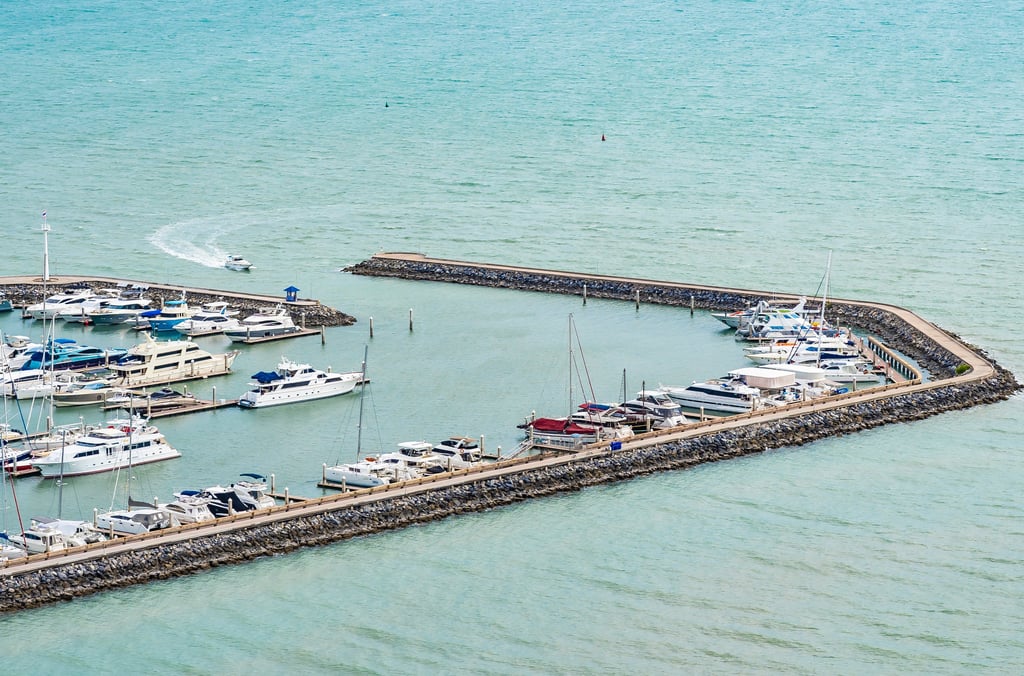Eco-Friendly Seawall Construction Fort Lauderdale
Discover environmentally friendly seawall construction Fort Lauderdale. Learn best practices, sustainable materials, and marine-safe erosion solutions.
SEAWALL INSPECTION
10/16/20254 min read


Seawall Inspection
Eco‑Friendly Seawall Construction: Balancing Protection and Marine Health
Seawalls are essential for protecting waterfront properties from erosion, storm surges, and rising sea levels. In Fort Lauderdale, where coastal living is prevalent, homeowners and municipalities are increasingly seeking environmentally friendly seawall construction in Fort Lauderdale to safeguard both their property and the delicate marine ecosystem.
Traditional concrete seawalls, while effective at controlling erosion, can disrupt habitats, affect water quality, and reduce biodiversity. Modern eco-friendly solutions integrate sustainable materials, green engineering, and careful planning to minimize environmental impact while maintaining shoreline protection.
This guide explores the principles, materials, and best practices for constructing seawalls that protect both property and marine life.
Understanding the Impact of Traditional Seawalls
Traditional seawalls, often made from poured concrete or steel, create rigid barriers along the shoreline. While they prevent direct erosion, they can cause several environmental concerns:
Habitat Disruption: Seawalls can eliminate natural intertidal zones that support fish, crustaceans, and other marine species.
Altered Water Flow: Hard barriers may change tidal and current patterns, leading to sediment accumulation or scouring.
Reduced Biodiversity: Shoreline vegetation and coral reefs often decline when seawalls replace natural shorelines.
These concerns have prompted the adoption of more environmentally conscious construction methods.
Principles of Environmentally Friendly Seawall Construction
Eco-friendly seawall projects aim to balance erosion control with marine conservation. Key principles include:
Minimal Disturbance: Limit the area of shoreline impacted during construction.
Habitat Preservation: Maintain or restore critical habitats such as mangroves, seagrasses, or oyster beds.
Sustainable Materials: Use rocks, recycled concrete, or permeable materials instead of non-porous concrete.
Natural Aesthetics: Design structures that mimic natural slopes and substrates.
Incorporating these principles ensures that Fort Lauderdale’s coastal waters remain healthy while providing long-term shoreline protection.
Sustainable Materials for Seawall Construction
Choosing the right materials is crucial for an eco-friendly seawall. Some popular options include:
1. Rock Revetment
Rock revetment involves placing large, carefully sized stones along the shore to dissipate wave energy naturally. This method allows water to flow between rocks, supporting marine-life and maintaining sediment transport.
2. Recycled or Eco-Conscious Concrete
Using recycled aggregates or environmentally certified concrete reduces carbon emissions and minimizes ecological impact. These materials can be designed to allow some water permeability, benefiting the surrounding ecosystem.
3. Vegetated Living Walls
Incorporating native plants and mangroves into seawall design not only strengthens the structure but also provides habitat for fish, birds, and other wildlife. Vegetated walls improve water quality by filtering runoff.
4. Modular and Permeable Panels
Some green engineering approaches use modular panels that allow water to pass through while reducing wave impact. These systems often integrate natural substrates and can be adapted to tidal changes.
Erosion Control Alternatives
Eco-friendly approaches often combine seawalls with other erosion control strategies:
Living Shorelines: Use a combination of vegetation, sand, and low-permeable structures to reduce erosion, naturally.
Breakwaters and Offshore Reefs: Reduce wave energy before it reaches the shore.
Hybrid Approaches: Combine small-scale rock revetments with living vegetation to balance protection and ecological benefits.
These alternatives are especially valuable in areas where maintaining marine ecosystem health is a priority.
Best Practices for Eco-Friendly Seawall Construction
Following best practices ensures that eco-friendly seawall projects succeed:
Permits for Habitat Zones: Work closely with local authorities to obtain necessary permits for habitat zones, ensuring compliance with environmental regulations.
Site Assessment: Conduct thorough assessments of water flow, sediment transport, and existing habitats before construction.
Construction Timing: Schedule construction during periods that minimize disruption to spawning or migration cycles.
Monitoring: Post-construction monitoring ensures that the structure remains stable and does not negatively impact the surrounding ecosystem.
Community Engagement: Educate property owners and stakeholders about eco-friendly solutions and involve them in planning.
By following these practices, contractors and homeowners can build effective, sustainable seawalls that last for decades.
The Role of Green Engineering
Green engineering integrates ecological knowledge into structural design, aiming to reduce the environmental footprint of coastal protection projects. Techniques include:
Designing structures that mimic natural slopes and tidal patterns.
Using materials that provide habitat niches for marine life.
Allowing partial water infiltration to maintain natural sediment transport.
This approach ensures a long-term balance between property protection and marine health. If you're planning a new coastal construction or need expert maintenance to ensure your structure aligns with sustainable engineering principles, contact our team today for professional consultation and eco-friendly solutions.
Working with Professionals
Engaging a skilled sea wall contractor is essential for eco-friendly projects. Professionals experienced in sustainable shoreline management can:
Recommend the most suitable sustainable materials for your site.
Design structures that comply with environmental regulations.
Implement hybrid solutions combining hard structures with living shorelines.
Monitor long-term performance and adapt strategies as needed.
Certified contractors in Fort Lauderdale are familiar with both local coastal conditions and the permitting process, making them an invaluable partner in eco-conscious seawall construction.
Conclusion
Eco-friendly seawall construction in Fort Lauderdale represents a new era of coastal protection. By integrating sustainable materials, green engineering, and habitat-friendly designs, homeowners and municipalities can protect property while maintaining a healthy marine ecosystem. Whether through rock revetment, modular panels, or living shorelines, environmentally conscious strategies reduce erosion without sacrificing ecological integrity.
Engaging a professional sea wall contractor who understands local regulations, habitat requirements, and best practices ensures a successful project that balances safety and environmental stewardship. With careful planning, proper permits, and ongoing monitoring, eco-friendly seawalls can provide long-term protection and support marine health for generations to come.
FAQs
1. What makes seawall construction environmentally friendly?
Eco-friendly seawalls use sustainable materials, integrate vegetation, minimize habitat disruption, and employ green engineering practices to protect marine ecosystems.
2. Are rock revetments better than concrete seawalls?
Rock revetments allow water flow, support marine life, and mimic natural shorelines, making them a more environmentally friendly alternative to rigid concrete walls.
3. Do I need permits for eco-friendly seawall projects?
Yes. Permits for habitat zones are required to ensure compliance with local and federal environmental regulations.
4. Can eco-friendly seawalls prevent erosion as effectively as traditional ones?
Yes. When designed using best practices and combined with alternatives like living shorelines, sustainable seawalls provide durable erosion protection.
5. How do I choose the right sea wall contractor?
Look for contractors experienced in eco-friendly methods, knowledgeable about green engineering, and familiar with local permitting requirements.
Search
Is your seawall secure?
Don't wait for a small problem to become a disaster. Get a professional evaluation.
Long-Term Benefits of Environmentally Friendly Seawalls
Investing in eco-friendly seawall construction provides multiple advantages:
Enhanced Marine Biodiversity: Native vegetation and rock habitats support fish, invertebrates, and other wildlife.
Durability: Rock revetments and well-designed green structures withstand storms and reduce maintenance costs.
Regulatory Compliance: Meeting environmental standards avoids fines and ensures project sustainability.
Aesthetic Value: Natural-looking shorelines enhance property value and community appeal.
Reduced Environmental Impact: Minimizes disruption to coastal ecosystems and protects water quality.
These benefits highlight why sustainable solutions are increasingly preferred in Fort Lauderdale and other coastal regions.
Innovation
Renovating seawalls with modern technology and materials.
Quality
Strength
© 2024. All rights reserved.
